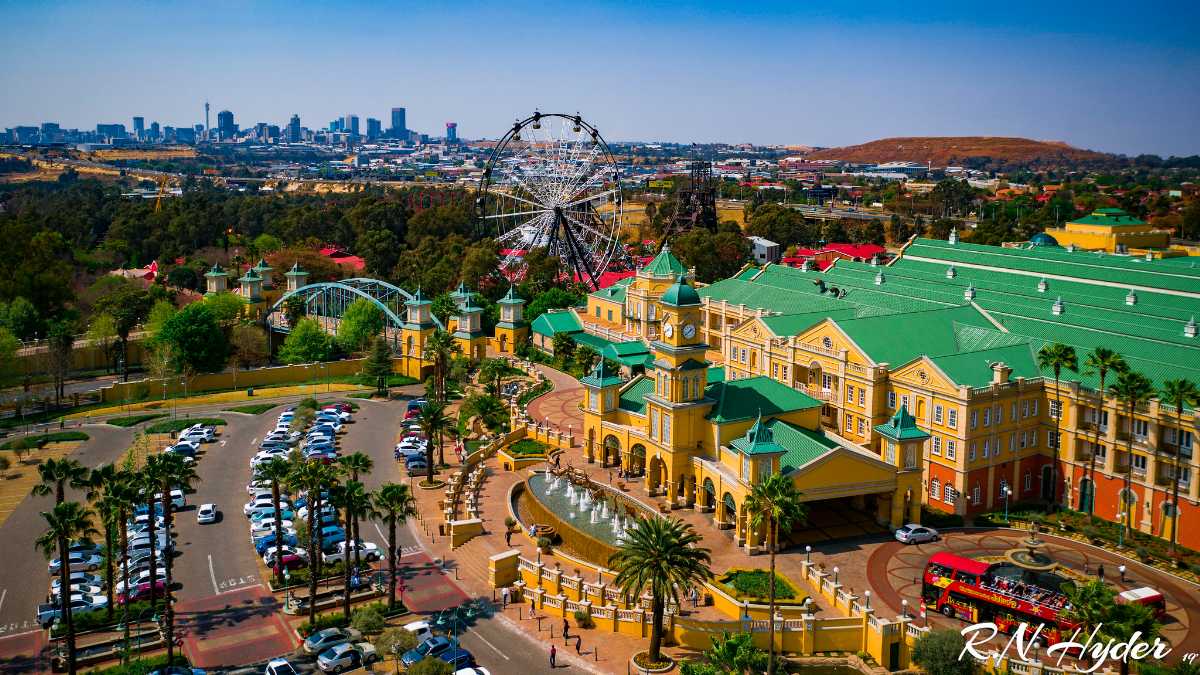The 10-Minute Rule for Johannesburg North Attractions
The 10-Minute Rule for Johannesburg North Attractions
Blog Article
Excitement About Johannesburg North Attractions
Table of ContentsJohannesburg North Attractions for DummiesThe Definitive Guide for Johannesburg North AttractionsA Biased View of Johannesburg North AttractionsWhat Does Johannesburg North Attractions Mean?Johannesburg North Attractions Things To Know Before You BuyThe Definitive Guide for Johannesburg North AttractionsSome Known Factual Statements About Johannesburg North Attractions
You should maintain protection in mind and travelers have to stay alert at all times when in strange environments. Speak with the locals when you are in community to discover the area you are remaining in. Johannesburg North attractions. When on the road (this does not relate to buying malls and other secure atmospheres) ideal general suggestions is to try your finest to look like a neighborhood and to stay clear of showing any kind of form of wealth
Indicators on Johannesburg North Attractions You Need To Know
Teacher Revil Mason O. J. (Thomson, 1946) explored the Witwatersrand's pre-colonial history. His archaeological work blew up the 'em pty land' myth, according to which the area was lacking human habitation before the arrival of European inhabitants. In his publications Prehistory of the Transvaal: A Document of Human Activity (1962) and Beginnings of Black Individuals of Johannesburg and the Southern Western Central Transvaal Advertisement 3501880 (1986 ), Professor Mason demonstrated the degree of social and financial development in the area before Europeans established foot below.

Examine This Report about Johannesburg North Attractions
In 1878, David Wardrop found gold in quartz capillaries at Zwartkop, north of Krugersdorp. In 1881, Stephanus Minnaar came across gold on the ranch Kromdraai, near the Cradle of Mankind.
In March 1886, an outcropping (quickly to be called the Main Reef) was located, quite fortuitously, on Gerhardus Oosthuizen's ranch Langlaagte. Some claim that the Lancastrian coal miner George Pedestrian uncovered this reef. Another itinerant English prospector, George Harrison (who had previously operated in Australian mines) gotten a prospecting permit in regard of Langlaagte in Might 1886.
He decided to go on in a mission for greener fields, and disposed of his Langlaagte insurance claim for the handsome amount of 10. Alas: beneath lay the richest goldfield ever discovered. The exploration of this rich auriferous reef provoked a gold rush that indicated completion of agrarian tranquillity in the southern Transvaal.
It would, within six years, become the biggest town in southern Africa. Within a decade, it would make the Z. A. R. until then an anarchical and insolvent little state the wealthiest country in Africa. By the turn of the century, the Z. A. R. was to go beyond Russia, Australia and the United States of America to become the globe's leading gold manufacturer, creating even more than a quarter of the globe's gold.
Excitement About Johannesburg North Attractions
It was understood as Ferreira's Camp, named after Colonel Ignatius Ferreira. He was a Boer traveler upon whom the British authorities had bestowed the standing of Companion of the Most Differentiated Order of St Michael and St George (qualifying him to the post-nominal letters C. M. G.) in appreciation for his role in the battle that had actually deposed the Pedi king Sekhukhune in 1879.
Soon the camp was including outdoors tents and wagons as novices got here daily from everywhere. By September 1886, some 400 individuals resided in Ferreira's Camp, which quickly boasted upreared iron and timber structures. Two various other camps were established: Meyer's Camp on the ranch Doornfontein, and Paarl Camp. The latter was nicknamed Afrikander Camp; lots of people from the Cape Swarm worked out there.

Excitement About Johannesburg North Attractions
This name got currency by word of mouth, such that the State Secretary attested the name to the Mining Commissioner on 9 October 1886. Stands in the village were auctioned on 8 December 1886. While some stands were sold for 10, others were torn down for as low as sixpence.
Two years later on, these erven were to alter hands for as long as 750 each. The tented camps dwindled as a dorp of corrugated iron buildings developed and expanded north of the mines situated along the Key Reef Road. Locations such as Jeppe's Town (where working-class immigrants erected their residences) and Doornfontein (where the upscale brand-new 'Randlords' began to create their luxurious residences) were quickly included to the ever-expanding map of the town.
Get This Report on Johannesburg North Attractions
Apart from the street names, there were no indicators of Johannesburg being positioned in a Dutch-speaking nation., virtually everybody talked English and even the Government servants attended to one in English, unless they were first resolved in the Taal (or Reduced Dutch)'.
Britain had useful link a passion in making sure ideal conditions for gold production on the Witwatersrand, and that the gold was exported to London instead than Berlin an essential made all the a lot more clamant by the Z. A. R.'s enhancing toenadering with Germany. Mine owners were on a crash training course with President Kruger, whose policy of monopolistic giving ins (commonly granted to his cronies) prevented mining firms from obtaining products of products (especially dynamite) and labour by themselves, cheaper terms
Johannesburg North Attractions Fundamentals Explained
In 1890, the Volksraad had restricted the franchise to white males who had actually resided in the Z. A. R. for fourteen years or longer, hence invalidating many of the immigrants (who occurred to be the major contributors to the fiscus). Frustration for the ballot was a mere pretense for promoting a different program; most uitlanders regarded themselves as short-lived visitors and had no objective of continuing to be in the Z.
Report this page